[ad_1]
Collector Rajan Bijlani has opened up his London residence for an exhibition featuring highlights from his 500-piece collection of furniture made for Le Corbusier’s master plan of Chandigarh in the 1950s and 60s.
The Syncretic Voices exhibition, curated by Bijlani together with art advisers Michael Jefferson and Truls Blaasmo, features mid-century originals alongside contemporary pieces by artists and designers from the South Asian diaspora.
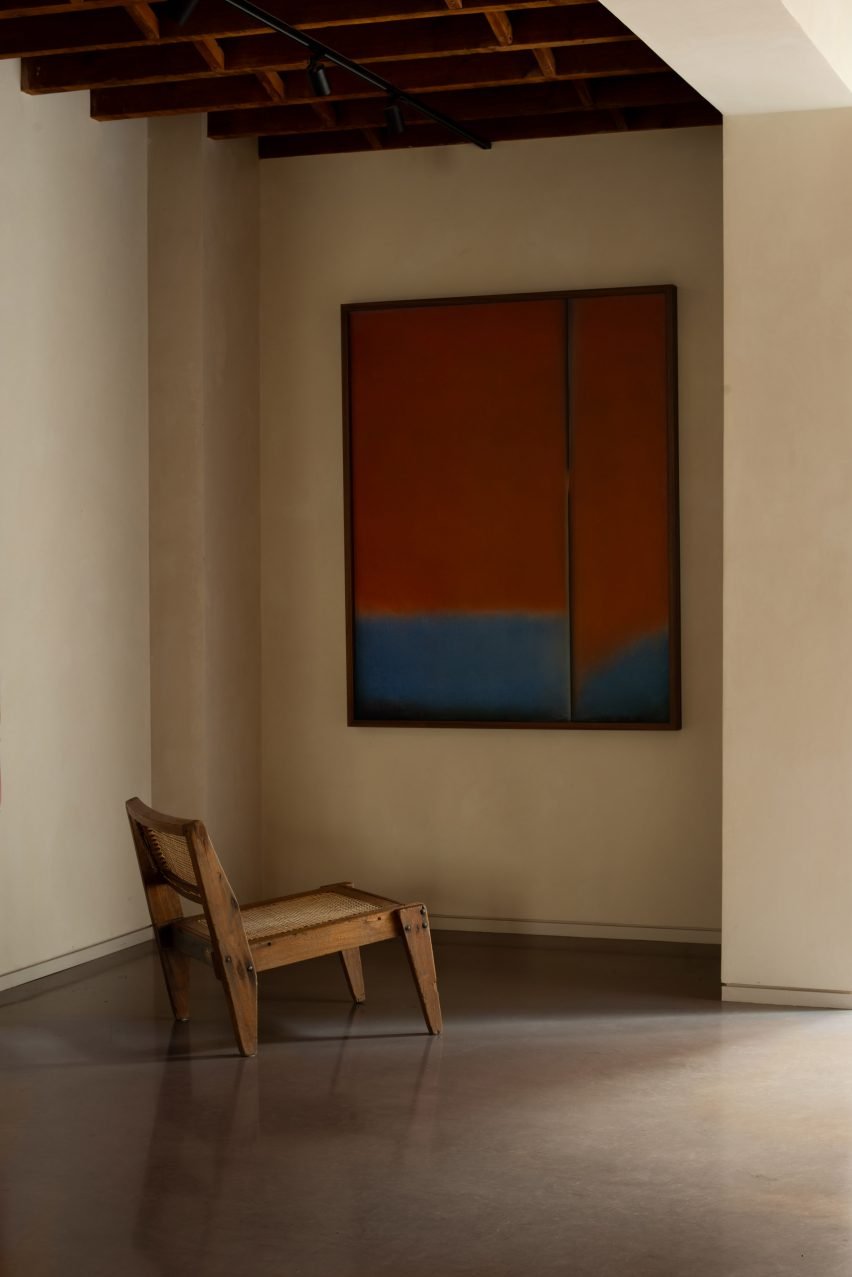
Concurrently with Frieze Art Fair, the show is being held at Bijlani’s London townhouse, which was previously a ceramicist’s residence and studio known as Fonthill Pottery.
“The building was formerly the residence and studio of the celebrated ceramicist Emmanuel Cooper from the late 1970s until he passed away in 2012,” Bijlani told Dezeen. “I wanted to honour the rich history of the arts in the space by hosting an exhibition here.”
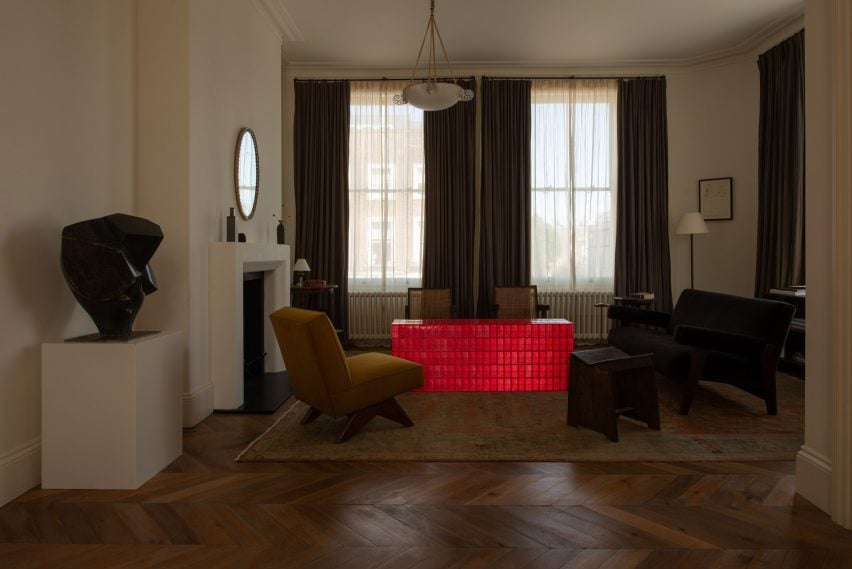
“Having the exhibition in my home is a way of narrowing the divide that is normally experienced between design and art and how they interact in a collection,” he added.
Bijlani collaborated with architect Joseph Edwards and interior designer Rebecca Sicardi to transform his home into a temporary gallery.
Dotted across the townhouse are pieces by artists and designers of South Asian origin, including a trio of mosaic works made from bicycle reflectors by Bangladesh-born London-based artist Rana Begum.
Also featured are hand-glazed tile assemblages by ceramicist Lubna Chowdhary – who was born to Indian parents in Tanzania but grew up in Britain – hinting at the townhouse’s previous use.
These contemporary pieces are accompanied by mid-century Chandigarh furniture, sourced from the 500-piece collection Bijlani accumulated over the course of 20 years.
Chandigarh, which has been called the “first modernist city in the world”, was master-planned by Le Corbusier and his cousin Jeanneret after it was named the new capital of the state of Punjab in the wake of India’s partition and independence.
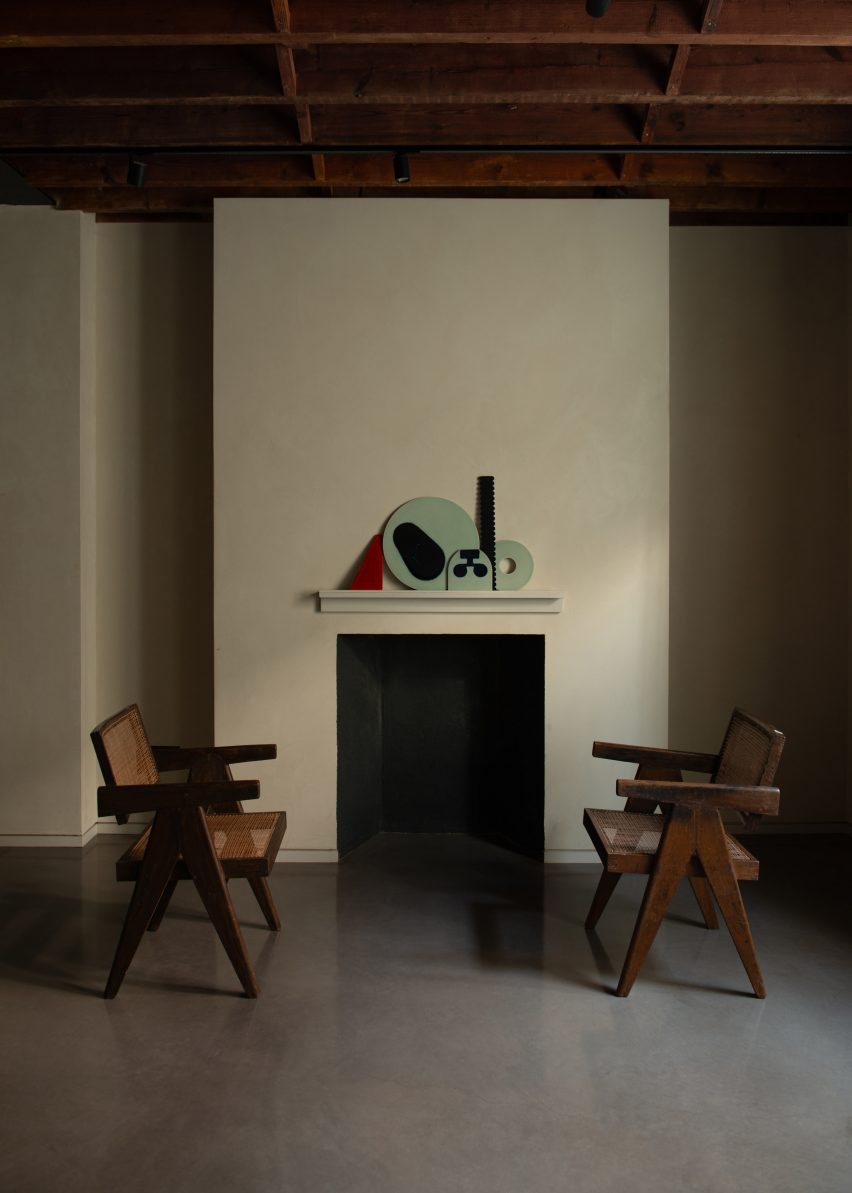
As part of the project, a team led by Jeanneret designed a range of furniture for the city’s newly constructed buildings, the most popular being the Chandigarh chair – a mid-century modern classic.
“The original furniture by Jeanneret and Le Corbusier remains elegant, functional and adaptable to use in many interiors,” Bijlani commented.
“The minimal geometry and perfect proportions allow the work to live in harmony with art, which is relevant to today’s taste.”
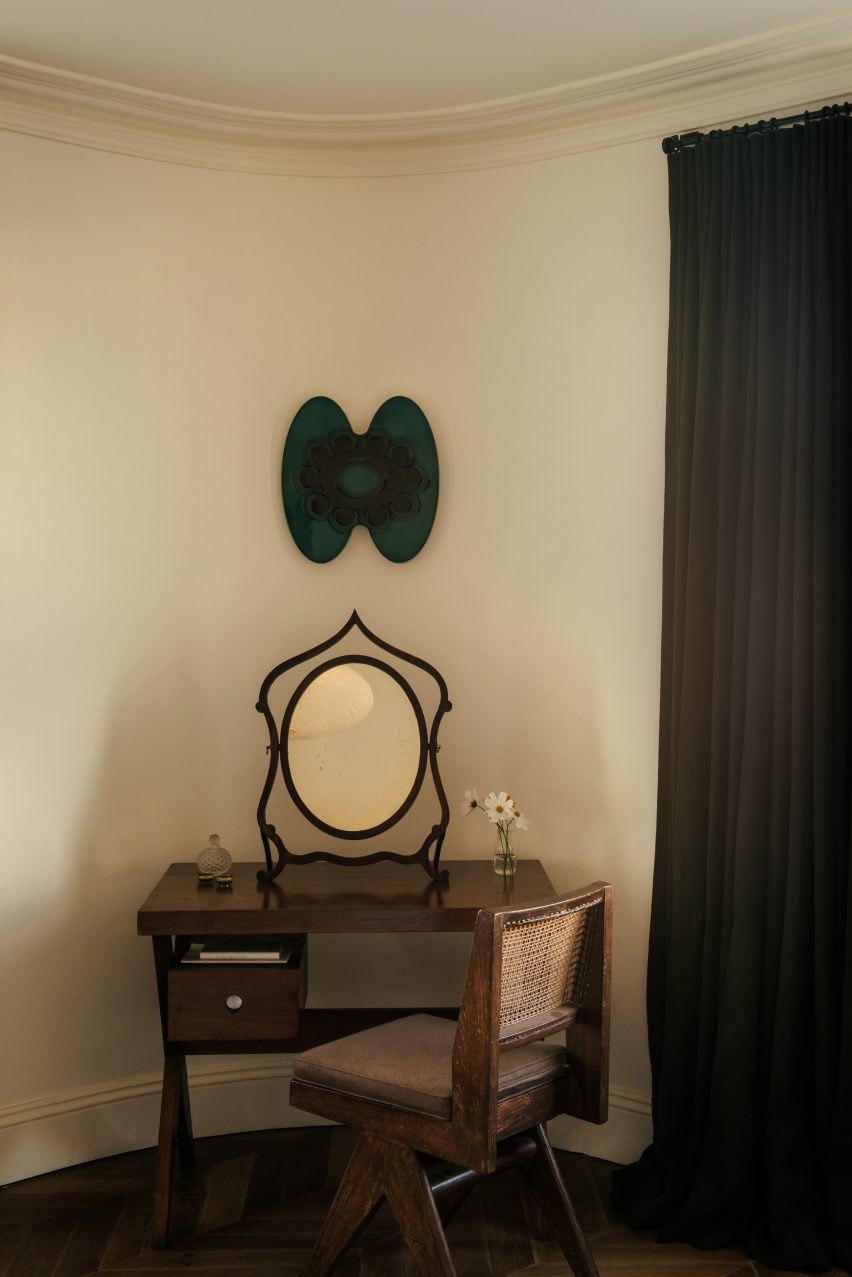
“My collection specifically adds to the lasting impact and importance of the original works, as I focus on the rich surfaces and patina garnered over time,” he added.
Among the furniture on show are several limited-edition pieces restored in collaboration Loro Piano Interiors, the interiors arm of Italian luxury clothing and textile brand Loro Piana.
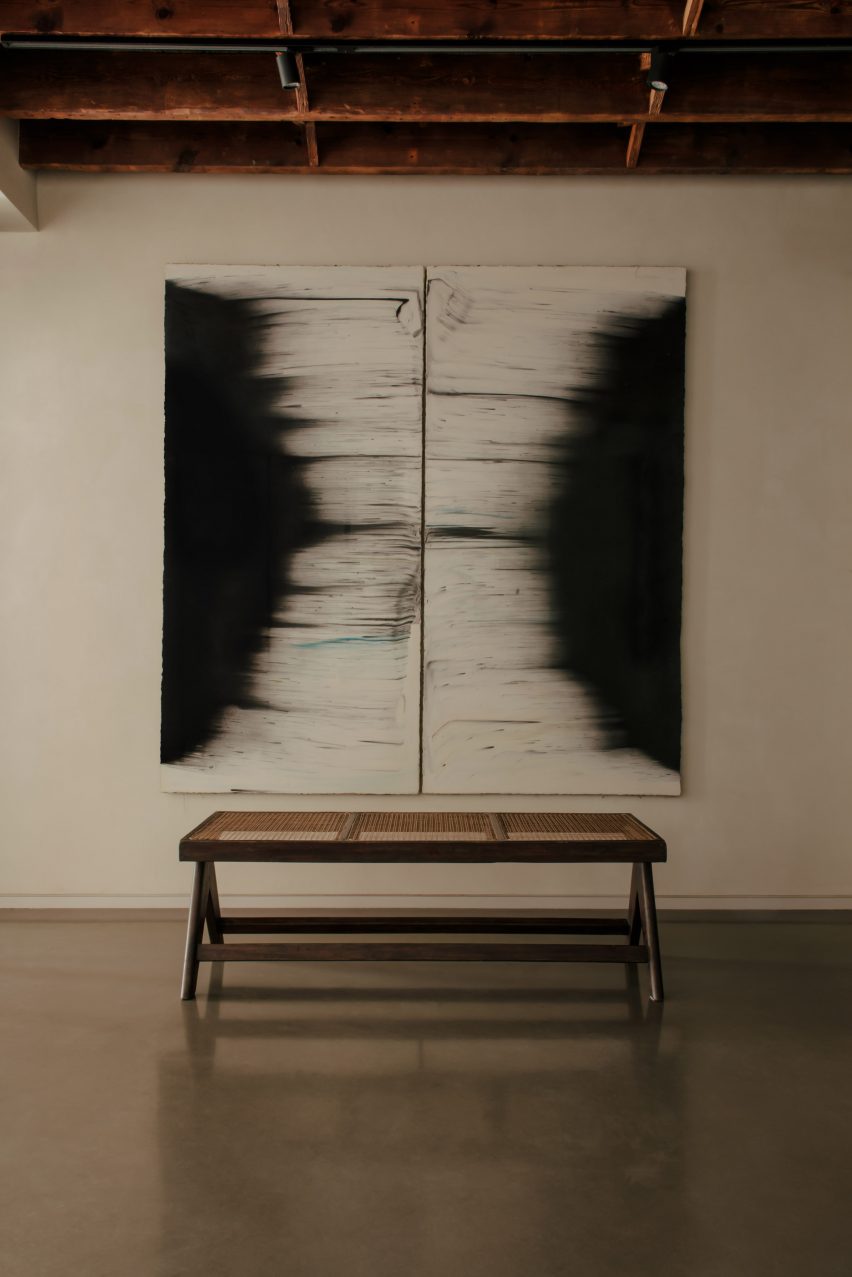
The exhibition hopes to show the ripple effects of India’s partition on the output of artists and designers born from its diaspora, Bijlani said.
“This curatorial project stems from the shared experience of the South Asian diaspora, which is closely intertwined with the Partition of India in 1947,” he explained.
“Despite this being a time of great upheaval, one that severed both communities and cultures, collective memories and histories have persisted, passed down from generation to generation through lived experiences.”
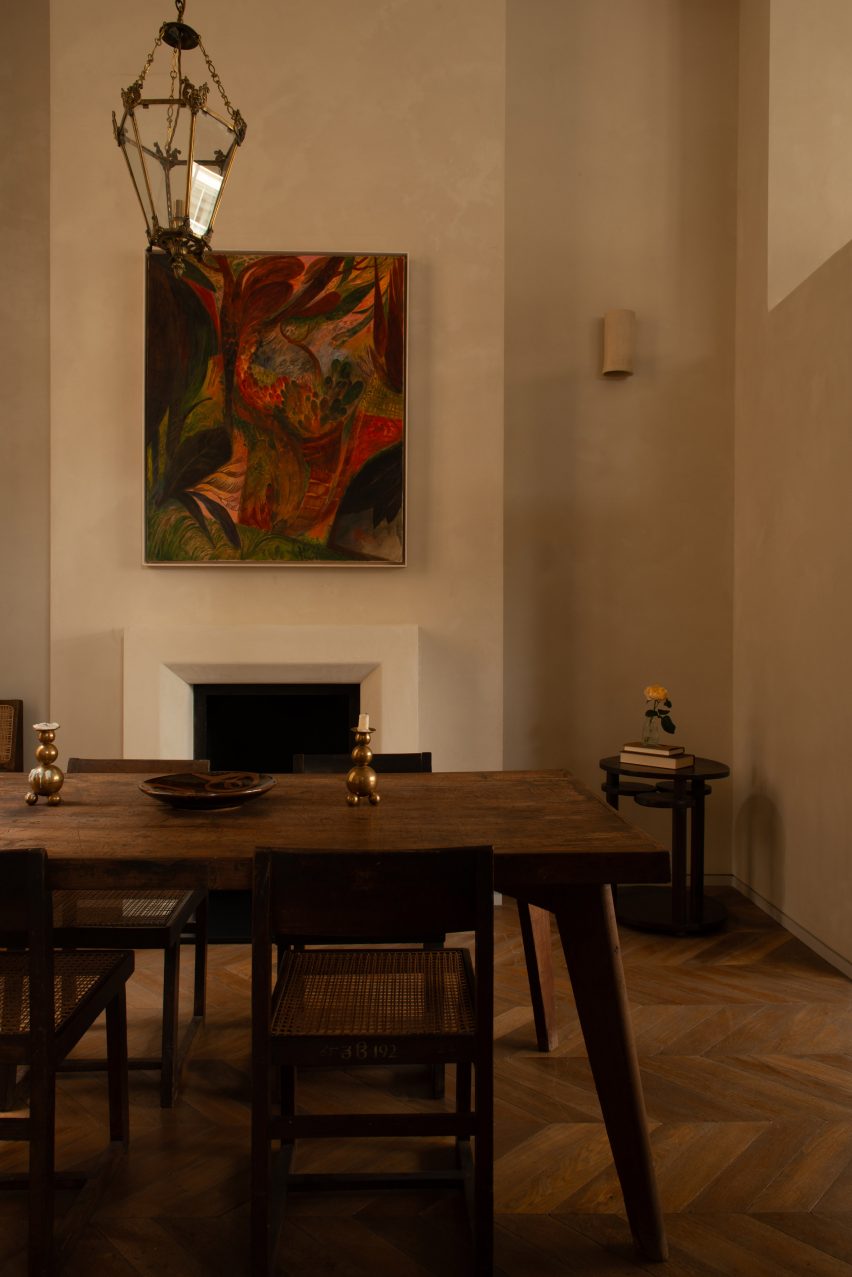
Also on show in the townhouse are paintings by Tanya Ling, Soumya Netrabile, Vipeksha Gupta and Harminder Judge.
Dezeen recently took a deep dive into the Chandigarh chair as part of our series on mid-century modern design, exploring some of the questions around the chair’s authorship and the involvement of Indian architect Eulie Chowdhury.
The photography is by Genevieve Lutkin with styling by Olivia Elias.
Syncretic Voices is available to view by appointment only until 10 November at Fonthill Pottery. See Dezeen Events Guide for an up-to-date list of architecture and design events taking place around the world.
[ad_2]
Source link

